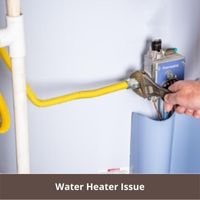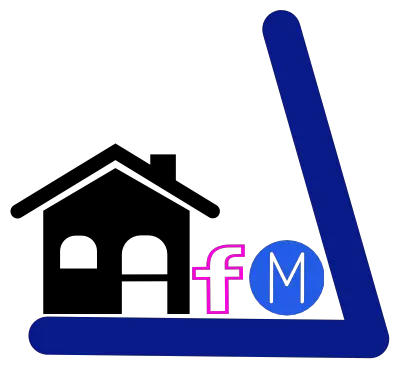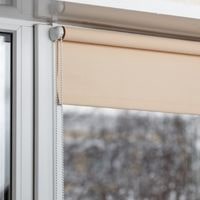How to Increase Water Pressure In Shower
How to increase water pressure in shower. Taking a shower is one of life’s most basic pleasures. It’s not only about washing yourself but also a chance to reset your mood and forget about your daily worries and problems for a while.
However, if your shower has little water pressure, you will spend more time irritated than cleaning and relaxing. If you want to go from a drizzle to a jet in your shower, go through our guide to increase water pressure in shower.
The water pressure might be hard to comprehend for non-experts, especially if you’re replacing or repairing your appliances as part of a renovation.
You must first identify the kind of water pressure your home offers and how it compares to any possible shower or tap installation.
Let’s get this party started! We’ll start by looking at the various problems that might be causing your water pressure to be low. We’ll also go over some of the most likely causes of low water pressure so you can address them right away.
How to Increase Water Pressure In Shower

You can improve the water stream by removing the flow regulator. Do not try to remove or adjust the showerhead.
If that doesn`t fix the problem, you may have a water-restrictive shower valve instead of a faulty showerhead. Call in a licensed plumber if that’s the case.
1. Inspect the Showerhead
If your shower has weak water pressure and the rest of your home seems to be in order, the problem may be with the cleanliness of the showerhead.
There is less room for water to flow through if mineral deposits and limescale buildup in the showerhead.
Showerheads, like faucets and rain showerheads, may be unscrewed or twisted open. If yours isn’t able to do so, check the manufacturer’s instructions online. Take a toothbrush and clear out the dirt buildup inside after you’ve unscrewed it.
Now, pay attention to the tiny nozzles. Build-up can sometimes pass through them and obstruct the water flow immediately. Use a toothbrush to clean it out.
If the buildup is severe, you’ll need to take more extreme action. For this, you’ll need white vinegar. Put some vinegar in a bowl and submerge the showerhead in it for one night.
Rinse it out in the morning and replace it if this solves your problem; great! Otherwise, try different techniques that you may discover below.
2. Check Your Water Heater – The Real Culprit in Most Cases
Valves are another item to consider. Your water heater, like the one in your house, has one as well. If you’re having trouble with low water pressure when showering under hot water regularly, try switching the shut-off valve on.
Another reason for high water pressure might be a clogged water heater. The cleanliness of the heater’s tank may cause it to fill up with sediments.
To begin, first, drain your water heater. Then, clean out all of the lines thoroughly. Any debris trapped in the pipes should be removed.
3. Inspect the Possible Leaks
One of the most common reasons behind low water pressure is pipe leakage. It should be noted that if your plumbing system has leaks, the water flow will be decreased via the showerhead.
Remember that leaking pipes might cause issues beyond those related to water pressure, so you should address them as soon as possible.
4. Under-Sized Pipe Line
Undersized supply pipes are one of the most prevalent causes of low water pressure. This is a typical problem in older properties with still-operational plumbing infrastructure.
It’s also messy, and it would not be easy to replace. Probably, previous homeowners have not addressed the problem.
Methods Didn’t Work? Replace The Showerhead
Yes, this appears to be excessive, but bear it out. Some showerheads are intended to be constrictive right from the start.
If your existing low-flow or water-restricting component is incompatible with a medium-to-high-flow showerhead, simply swapping it out may help.
However, before doing so, you should first see whether the restricting device can be removed. If that’s the case, all you have to do is pull it.
Process to Increase Water Pressure in Shower

Required Items
- Calculator.
- 1 Liter Jug.
- Stop Watch Timer.
Step 1: Turn on the water. Make sure it’s at maximum capacity before turning it on, then let it run for a minute or so.
Step 2: Place the jug under the showerhead.
Step 3: Start the stopwatch as soon as the water stream hits the bottom of the jug.
Step 4: When the water level reaches a high enough level, it will overflow out of the bucket. When you notice that the water is beginning to burst, stop recording.
Step 5: As we took a 1-liter jug for the experiment, you will be dividing time to fill water by 1 (Jug’s capacity). The resultant value would be GPM (gallons per minute).
Step 6: Now, compare your GPM to the recommended standard to see whether your water pressure is normal or not.
Following are US Standards for GPM flow rate:
- <2 GPM – slow flow rate.
- 2 GPM – the standard flow rate.
- 5 GPM – the maximum flow rate.
What is Possible Reason for Low Shower Pressure?

A low-pressure shower might result from a clogged showerhead, a malfunctioning mixing valve, an improperly clogged valve, a leaking pipeline, or even a faulty water heater.
Don’t be too stressed out, though, since we’re on hand to assist you in finding and identifying the source of your shower issues.
Let’s bring these issues one by one so that you track down the problem in your case.
Inadequate Plumbing
The water pressure in your bathroom is directly linked to the health of your house’s plumbing system. Blockages, corroded pipes, and leaks can all disrupt the flow of water. Rusted steel pipes are one of the most typical examples.
Water Lines Issue in Your Area
If you use a local water supply, it’s worth looking into the setup and quality of the system. For example, if the primary pipes in your locality are old, the water pressure will be affected.
Closed Valve
There are numerous valves in your plumbing system. If any of them is partially shut, you might experience a lack of water pressure. Make sure the water meter valve, main shut-off valve, and all other valves are fully opened.
Water Heater Issue

If your water pressure drops when you switch on the hot water, your water heater likely is to blame.
To discover whether the equipment needs to be fixed or replaced, contact a professional plumber.
Irregular Water Pressure
The water pressure regulator’s responsibility is to maintain a safe water pressure level in your house. Unfortunately, this crucial component may fail, allowing the pressure to get dangerously low or high.
The water pressure regulator is generally found near the home’s water supply line and should only be handled by an expert plumber.
FAQs
What Is Commonly Occurring Reason Behind Low Water Pressure?
The clogged pipe is the most common reason behind low water pressure. Many people are unaware that clogged drain pipes have little effect on water pressure in their houses.
Why The Water Pressure Suddenly Dropped?
If a single faucet or showerhead has low water pressure, it’s not an issue with your pipes or water supply; the problem is with the fixture.
What Is the Average Water Flow Rate for a Home?
The typical home requires 100 to 120 gallons per day, with a flow rate of 6 to 12 gallons per minute on average.
Conclusion
How to increase water pressure in shower. You’ve learned how to increase shower water pressure after reading the article, but more importantly, you know how to find out what’s wrong.
Be patient; it’s a time-consuming procedure, and you’ll have to spend some money to resolve the situation.
Related Post




